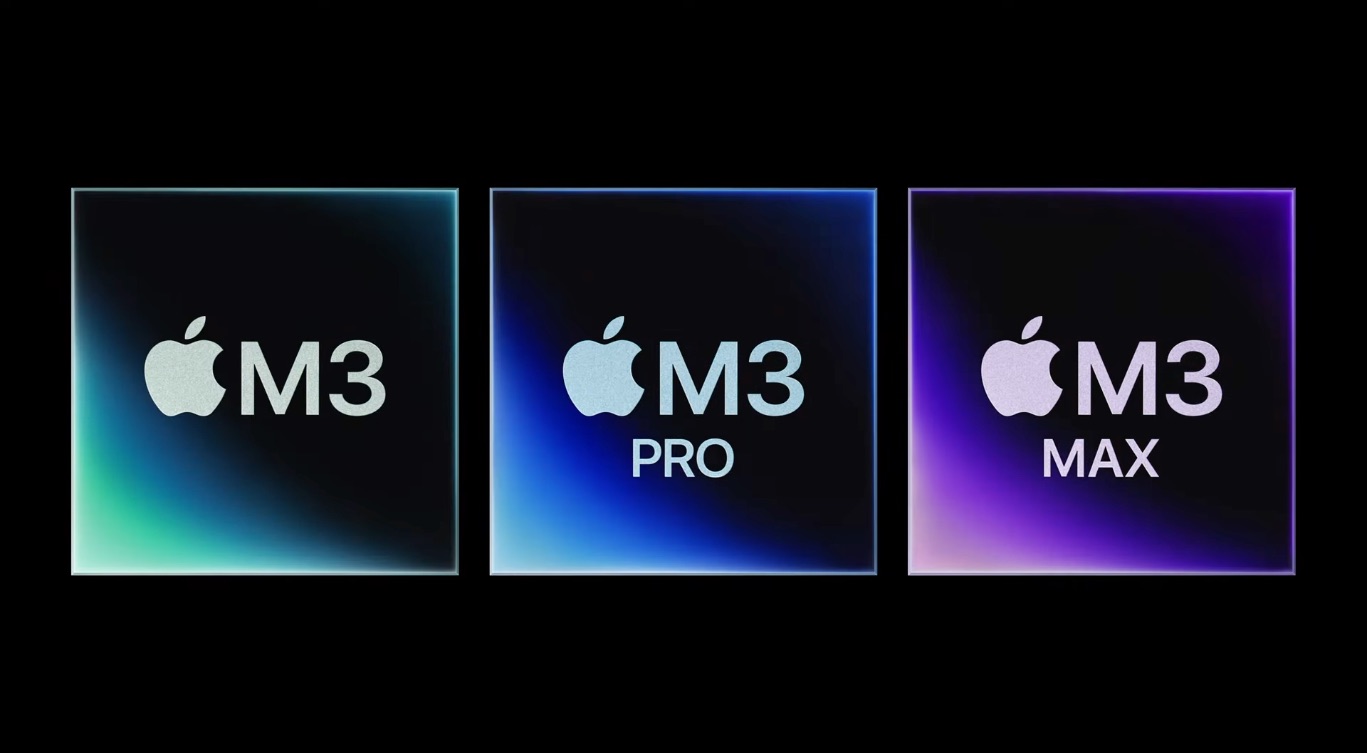

Apple on Monday unveiled its new M3, M3 Pro, and M3 Max chips, which feature dramatically increased performance and new capabilities for the company’s Mac lineup. The new chips are the first built using TSMC’s 3-nanometer process technology. The new process allows packing more transistors into a smaller area, resulting in improved performance and efficiency.
In addition to being faster, the M3 family of chips boasts a new technology called Dynamic Caching, bringing new features like mesh shading and hardware-accelerated ray tracing to the Mac for the first time. This results in rendering speeds that are up to 2.5x faster than the M1 family of processors. The M3 performance and efficiency cores are 30& and 50& faster than they were in the M1, respectively. Meanwhile, the M3 Neural Engine offers a 60% increase in performance over the M1 family’s Neural Engine.
The M3 chip also includes new media engine support for AV1 decode, which Apple says will result in a more efficient and high-quality video streaming experience.
The next-generation GPU inside the M3 family of chips features Dynamic Caching that provides an advantage over traditional GPUs, as it allocates Mac local memory in hardware in real time, using only the exact amount of memory needed for each task. This dramatically increases the average utilization of the GPU, significantly improving performance for demanding pro apps and games.
The next-generation GPU inside the M3 family of chips represents the largest leap forward in graphics architecture for Apple silicon. It features Dynamic Caching that, unlike traditional GPUs, allocates the use of local memory in hardware in real time. With Dynamic Caching, only the exact amount of memory needed is used for each task. This is an industry first, transparent to developers, and the cornerstone of the new GPU architecture. It dramatically increases the average utilization of the GPU, which significantly increases performance for the most demanding pro apps and games.
With the M3 family of chips, hardware-accelerated ray tracing comes to the Mac for the first time. Ray tracing models the properties of light as it interacts with a scene, allowing apps to create extremely realistic and physically accurate images. This, along with the new graphics architecture, allows pro apps to deliver up to 2.5x the speed of the M1 family of chips. Game developers can use ray tracing for more accurate shadows and reflections, creating deeply immersive environments. Additionally, the new GPU brings hardware-accelerated mesh shading to the Mac, delivering greater capability and efficiency to geometry processing, and enabling more visually complex scenes in games and graphics-intensive apps. This breakthrough GPU architecture enables all of these enhancements and features while maintaining Apple silicon’s legendary power efficiency. In fact, the M3 GPU is able to deliver the same performance as M1 using nearly half the power, and up to 65 percent more performance at its peak.
The next-generation M3, M3 Pro, and M3 Max CPU boasts performance cores of up to 30% faster than the M1 family, so developers will see faster compiling of code in Xcode. The efficiency cores are up to 50% faster than the same cores in the M1, meaning both performance and battery life are much improved.
The M3 features 25 billion transistors, a 5 billion increase over the M2. Its 10-core GPU is 65 percent faster than M1 for graphics performance. It boasts an 8-core CPU, with four performance cores and four efficiency cores, for CPU performance that is up to 35% faster than M1. The chip supports up to 24GB of unified memory.
The M3 Pro boasts 37 billion transistors and an 18-core GPU, the GPU is up to 40% faster than M1 Pro. Support for unified memory is up to 36GB, while the 12-core CPU design has six performance cores and six efficiency cores, for single-threaded performance that is up to 30% faster than M1 Pro.
The M3 Max sports up to 92 billion transistors, boasting a 40-core GPU that is up to 50% faster than the M1 Max and offers support for up to 128GB of unified memory. A 16-core CPU features 12 performance cores and four efficiency cores, providing performance that’s up to 80% faster than M1 Max. The M3 Max also has two ProRes engines.
Apple says the power-efficient performance of M3, M3 Pro, and M3 Max helps the new MacBook Pro achieve the longest battery life ever in a Mac — up to 22 hours, resulting in less energy being consumed during its lifetime.
Apple’s global corporate operations are carbon neutral, and by 2030, the company plans to have net-zero climate impact across its entire business.